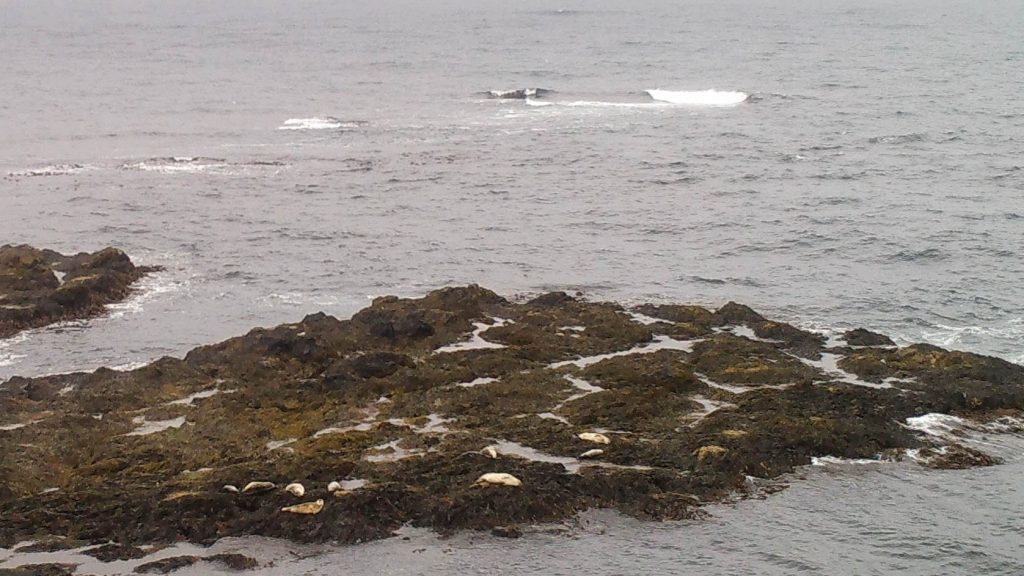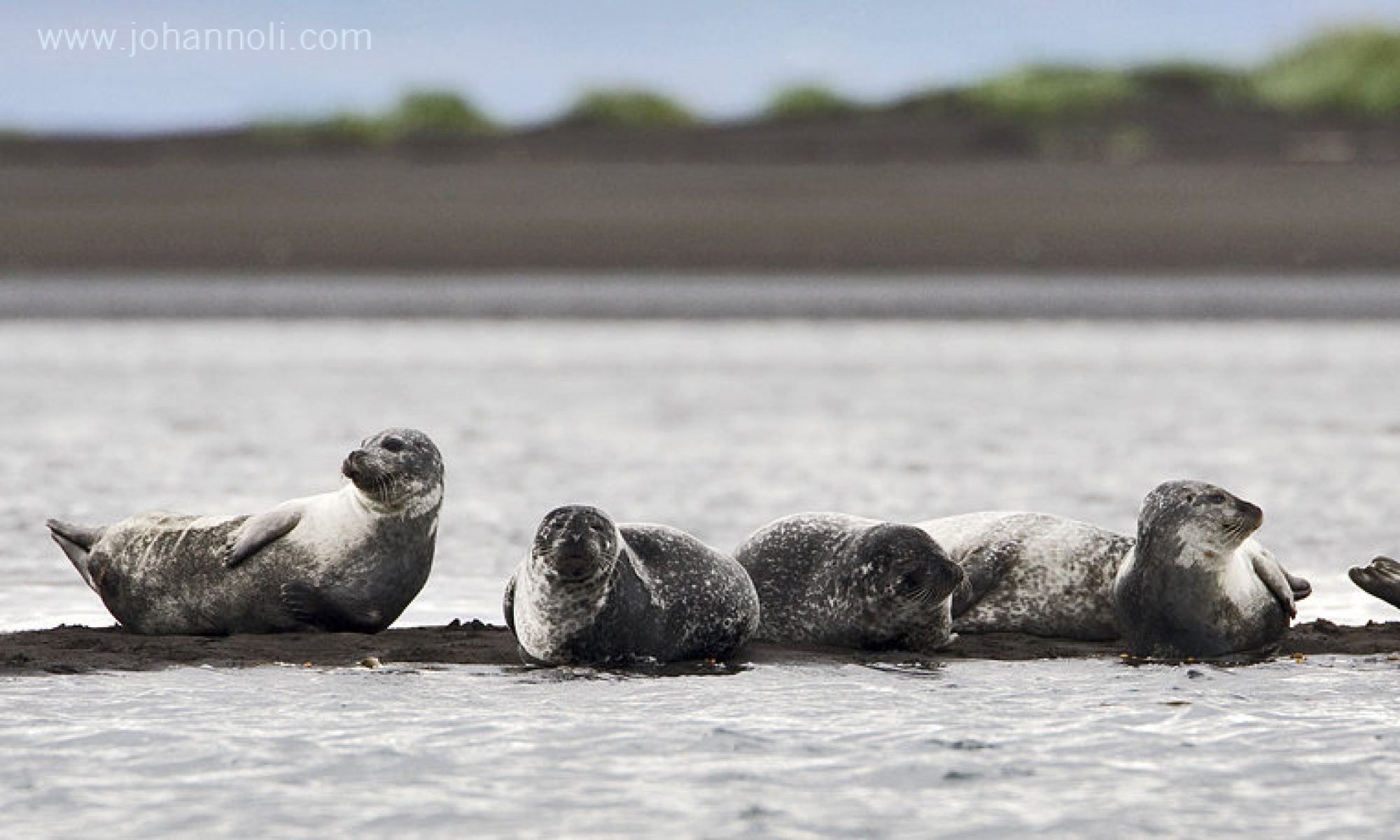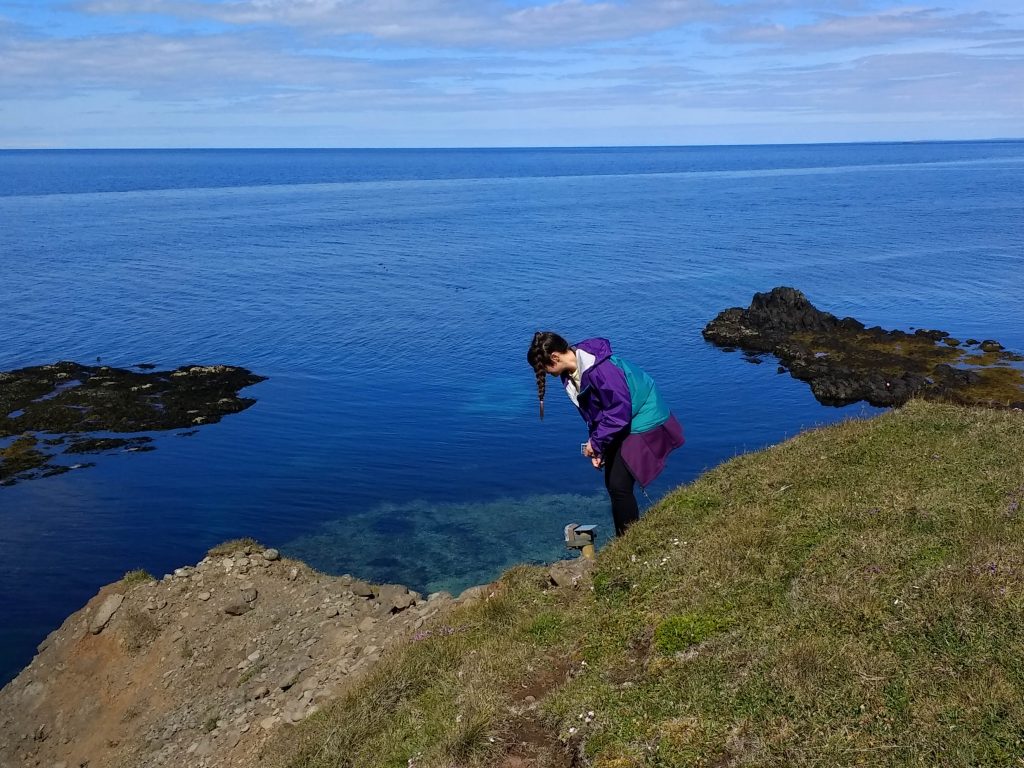
Since their installation in May, two automatic trail cameras have been photographing two skerries off the west coast of Vatnses. The cameras turn themselves each morning at day break, they then take one photo every 10 minutes, then they shut themselves off when darkness comes after sunset. Also, they are triggered by motion (a feature we cannot shut off) so we get extra photos every time a bird flies close enough to the sensor. Each month, researchers go out to check on the cameras and to switch out batteries and memory cards. The photos are then downloaded to a hard drive and we are combing through the ever-growing collection of photographs to record when seals were hauled out on the rocks and how many there were.
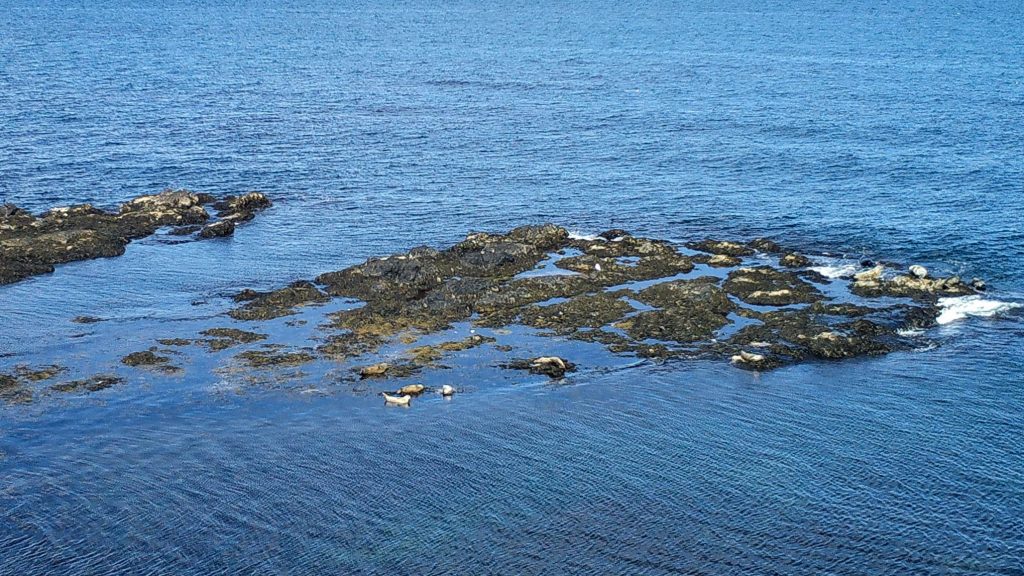
The data collected during this project will be useful in more ways than one. First, it’s a pilot study on the presence and behavior of seals at a location that is being considered for development of a new seal watching site. An important part of the feasibility of this site for seal watching is seal activity. So far, it looks like there are seals hauled out there every time the tide is low enough for the skerries to be exposed. We have been seeing female seals with pups as well as individual seals and adults with no pups. Once all photographs from this year are reviewed, the data will be analyzed to look for trends in behavior. We can investigate changes in the number of seals hauling out at the location from May through December. We can also use these series of photos to estimate how long individual seals on the rocks and possibly to gain insight into what factors influence the patterns we see in their behavior.
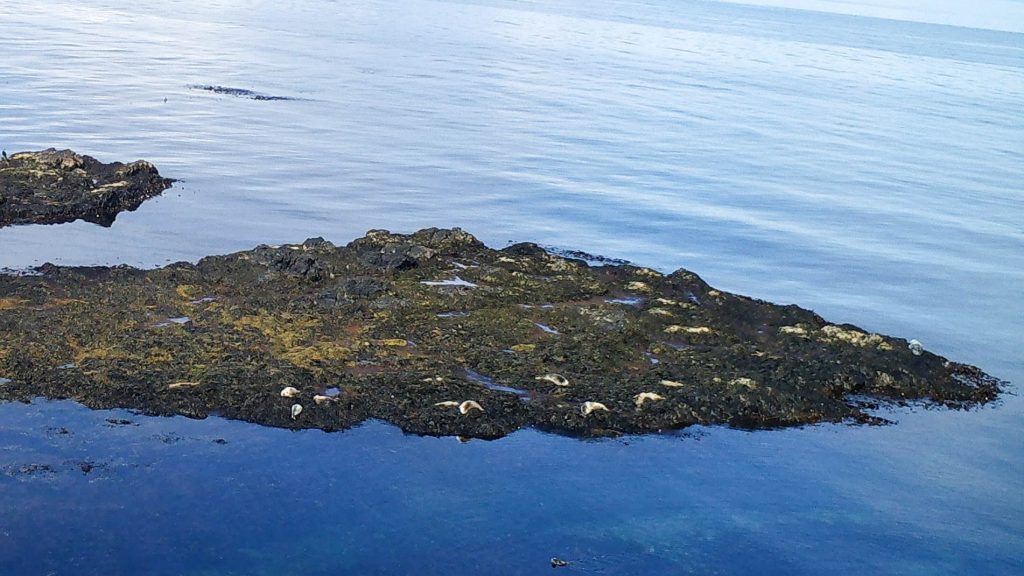
This is being considered a pilot study, which means that we don’t yet know the full detailed results we will get from this. Probably, this project will inspire new questions for further investigation using more precise methods to collect more in-depth data.
